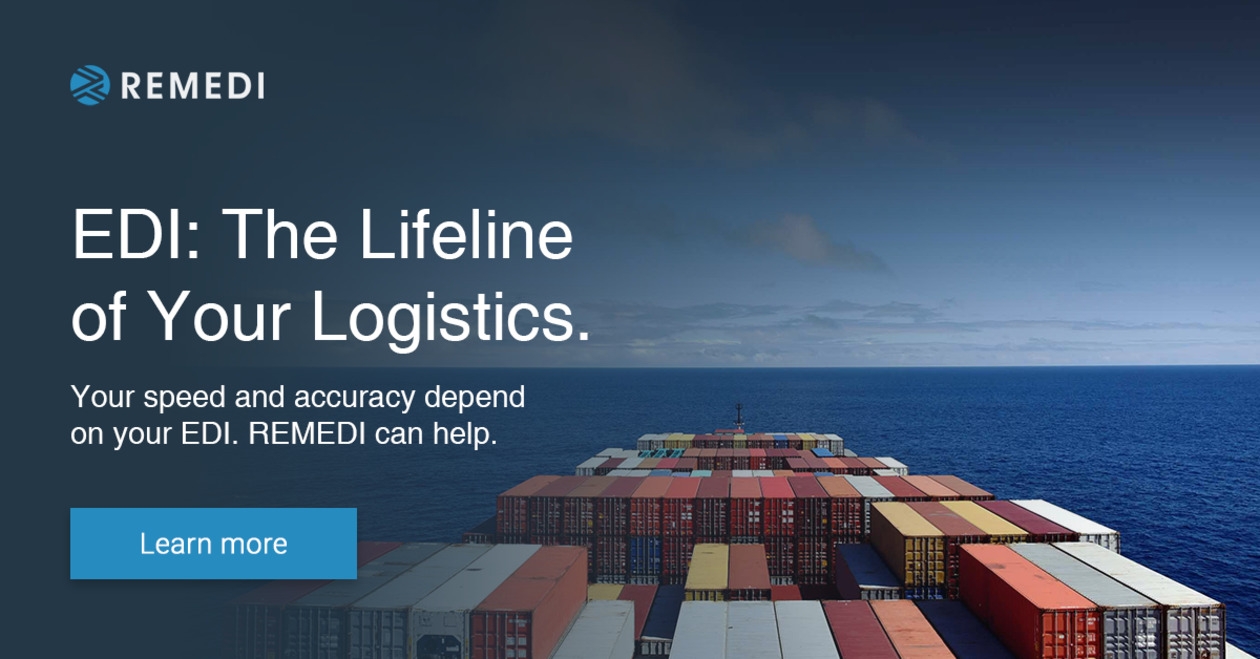
The shipping industry is an intricate web of logistics companies, port operators, and customs offices. Every party has a role to play in getting goods from one point of the world to another. Successful freight operations require forwarders to coordinate with everyone along the chain and meet their specific requirements, regardless of systems and procedure variations between partners.
Conventionally, the involvement of many parties results in painstakingly slow processes, with each participant manually updating their systems with the current shipping information and using human-dependent methods like email, fax, and even courier services to pass relevant data to the next partner in the sequence. Besides causing significant delays, these non-automated interactions often result in errors, as data can be misinterpreted or lost in communication.
Nevertheless, the increasing demand for efficiency and savings pushes the freight ecosystem to adopt technological solutions that enable fully automated data exchange between logistics partners. Among the most widely used options is Electronic Data Interchange.
EDI offers a significant advantage over manual data entry and document exchanges by automating interactions between trading partners, saving time and money. This article looks into the numerous challenges freight forwarders face and how EDI can help overcome them.
What is EDI?
Electronic Data Interchange is a data and document exchange protocol that facilitates automated communication between trading partners. With an EDI solution, one company's data management system can transmit information directly to another firm without human intervention.
EDI works by translating business documents into a standard data format that both parties can understand, regardless of their internal system setups. Therefore, once installed, EDI can act as a bridge between two companies, automatically exchanging the required shipping information securely and reliably.
How Does EDI Help Freight Forwarders?
Freight forwarders are under constant pressure to reduce transit times and shipping costs while complying with ever-changing government regulations. Furthermore, current supply chain disruptions resulting from the COVID-19 pandemic and the Russia-Ukraine conflict have made working conditions more difficult. As a result, forwarders are now forced to deal with unprecedented challenges like port closures and shipping container shortages.
Technology can offer critical solutions for forwarders to wade through such an increasingly challenging environment. EDI can help freight forwarding companies as a powerful automation tool in several compelling ways.
EDI facilitates communication with all parties in the supply chain
The key to a successful freight operation is seamless communication between all participants in the supply chain. EDI enables direct, real-time data exchange between partners, allowing them to quickly update each other on relevant changes and eliminating the need for time-consuming and error-prone manual updates.
With EDI, forwarders can automate communication with carriers, shippers, and consignees, reducing delays and keeping everyone updated on the latest shipping information.
EDI improves compliance with government regulations
The freight industry is highly regulated, and forwarders must comply with various government bodies' complex web of rules. These regulations include those related to dangerous goods, customs, environmental protection, and requirements that govern data sharing between parties.
EDI can help forwarders meet these obligations by providing accurate and up-to-date data on shipments, which freight forwarders can use to generate the required documents. EDI solutions can also automate the transmission of these documents to relevant parties, further streamlining compliance.
EDI enables cost savings
EDI implementation can help freight forwarders save time and money in several ways. First, EDI can automate the processing of orders, invoices, and other documents, eliminating the need to hire human staff for these activities. Second, streamlining communications with partners helps minimize information losses, delays, or misinterpretations, resulting in fewer unexpected outcomes and expedited shipments.
EDI data can also provide valuable insights that help identify areas for cost reduction. For example, EDI tracking data can help optimize shipping routes and schedules, reducing delays and shipping costs.
EDI enhances security
In the freight industry, it is essential to ensure the safety of people, products, and information. EDI helps forwarders protect their data with encryption and digital signatures that prevent tampering or unauthorized access. EDI solutions can also be configured to generate alerts if unusual activity is detected, further enhancing security.
EDI supports business growth
EDI will become an increasingly essential tool for freight forwarders as the freight industry evolves. By automating key processes and improving communication with partners, EDI can help forwarders operate more efficiently and grow their businesses.
EDI is a powerful ally for freight forwarders looking to keep their customers satisfied and stay ahead of the competition in an era of global trade.
EDI Freight Forwarder Standards
Because EDI data is processed by computers rather than humans, standard formats are required to ensure the machines can read and understand the shared information. Without standardization, companies would send documents in their internal formats, which receiving computers may not understand.
Consequently, human intervention would still be required to translate these documents to the appropriate format, effectively negating the automation benefits of EDI.
Several EDI standards have been established and are in widespread use today. Some of these include ANSI, EDIFACT, TRADACOMS, and ebXML. Moreover, every standard has numerous versions, such as ANSI 5010 or EDIFACT version D12. Therefore, two businesses communicating via EDI must agree on the specific EDI standard and version.
Once an EDI consensus is reached, companies can start sharing EDI documents. This exchange is accomplished through EDI transactions. Below are five common examples of EDI freight forwarder transaction codes.
- 204 - Carrier Load Tender: Used by a shipper or 3PL to tender a truckload shipment to a carrier. This shipper can be a manufacturer, distributor, retailer, or anyone else intending to ship goods.
- 210 - Freight Details and Invoice: Electronic invoice transaction.
- 211 - Bill of Lading: Electronic bill of lading stating shipping dates, shipper, consignee, shipment contents, and reference numbers.
- 212 - Delivery Trailer Manifest: This allows a carrier to inform the consignee of the trailer's contents.
- 214 - Shipment Status Message: Provides shipment statuses like shipper information, consignee details, current shipment locations, proof of delivery, and shipment description.
Remedi Can Help You Modernize your Freight Forwarding Operation
Freight forwarding is a complex and ever-changing business. As a forwarder, you must continuously update your operations, leveraging the latest technologies, satisfying your customers consistently, and staying ahead of the competition.
Despite being around for decades, EDI has proven itself a reliable and essential business tool for logistics. Modern EDI solutions now offer a wide range of features that can automate critical processes, improve communication, and enhance security within and beyond your organization.
Implementing the ideal EDI platform starts by partnering with the right EDI solutions provider. Remedi has built a years-long proficiency in helping freight forwarders get their operations to the next level with modernized EDI platforms.
Contact a Remedi expert todayand let us discuss the best EDI option for your business.




